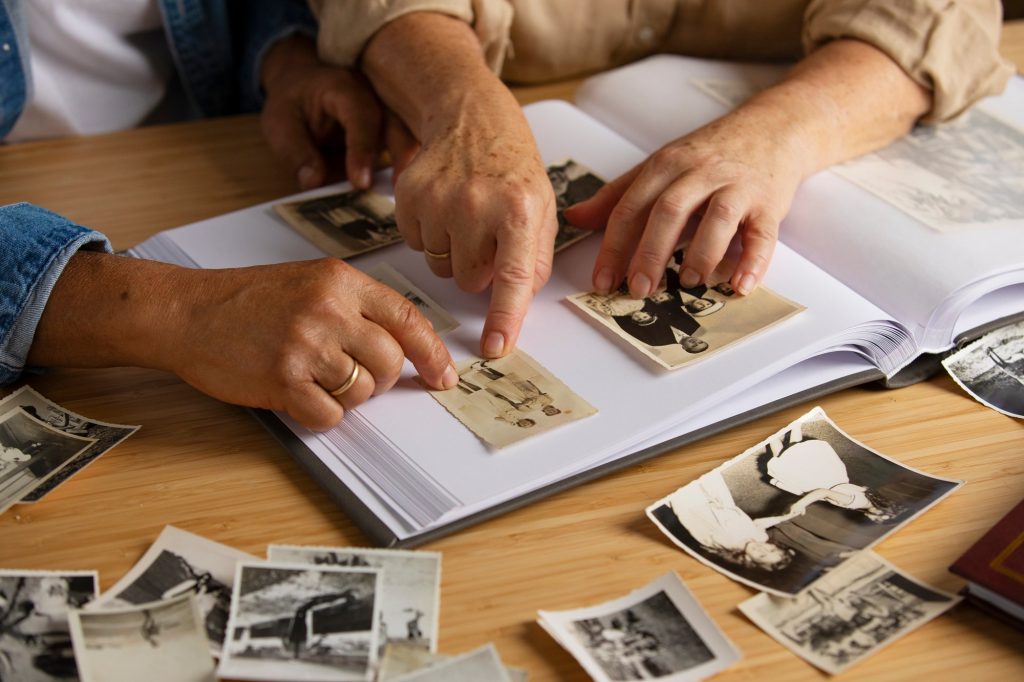As a photographer who also provides a photo editing service, I’ve been thinking about the best ways to preserve the images we take. With the world capturing billions of photos every day, it’s remarkable how much of our lives we document. But in years to come, will those photos be easily found and viewed? Nothing lasts forever, but by combining a few preservation techniques, we can ensure that future generations of our families will be able to look back on the memories we capture today.
Here are some practical steps to preserve your photos and make them accessible for years to come.

1. Digital Preservation
High-Quality Formats
Save your photos in high-quality, non-compressive file formats like TIFF or PNG for archival purposes. While JPEGs are perfect for sharing, they lose quality over time due to compression. Keeping a master copy in a high-quality format ensures your photos retain their original detail.
Cloud Storage
Cloud services such as Google Drive, Dropbox, or iCloud offer convenient and secure ways to store photos. Regularly back up your images to the cloud and choose a reputable service with strong security and long-term reliability.
External Hard Drives
External hard drives provide another layer of protection. Store copies of your photos on a physical drive and update them periodically. As technology evolves, make sure to transfer your files to newer storage formats to prevent obsolescence.
Metadata
Adding metadata—such as location, date, and descriptions—to your photos makes them easier to search and gives them more context for future viewers. Software like Adobe Lightroom or ExifTool is ideal for embedding this information.
Organised Folders
An organised file structure with clear naming conventions is essential. Sort your photos by year, event, or category to ensure they can be easily located.
File Redundancy
Store multiple copies of your photos in different locations. For instance, combine cloud storage with physical backups, such as hard drives or USB sticks, for added security.

2. Physical Preservation
Print Photos
Printing photos is a timeless way to preserve memories, but it’s important to remember that printed photos can fade and degrade over time. As a photo editor who restores old photos, I’ve seen images start to lose detail and colour within as little as 20 years. Use high-quality archival paper and fade-resistant inks to extend their lifespan. Store prints in acid-free albums or frames to protect them from light, heat, and moisture.
Scanning Old Photos
If you have older printed photos, scan them at high resolutions (300–600 dpi) to create digital backups. This not only preserves them but also ensures they’re more accessible for future generations without risking further damage to the originals.

3. Legacy and Sharing
Create a Personal Archive
Consider developing a personal archive that can be shared with family members. This could be a private website, an online gallery, or a shared family drive where everyone can contribute and view photos over time.
Pass It On
Designate a family member to manage your archive. By involving more people, you increase the likelihood of your photos surviving and being appreciated by future generations.
Tell the Story
Photos become even more valuable when paired with the stories behind them. Consider starting a family history blog or annotating your digital archive with personal notes, so future generations can connect with the images on a deeper level.

Final Thoughts
While no single method guarantees your photos will last forever, combining these techniques can make a world of difference. Whether you’re preserving digital files, creating physical prints, or building a legacy archive, the effort you put in today ensures that the memories you capture will continue to bring joy to your family for years to come.
So, will your photos last a lifetime? With a little planning and care, they just might.









